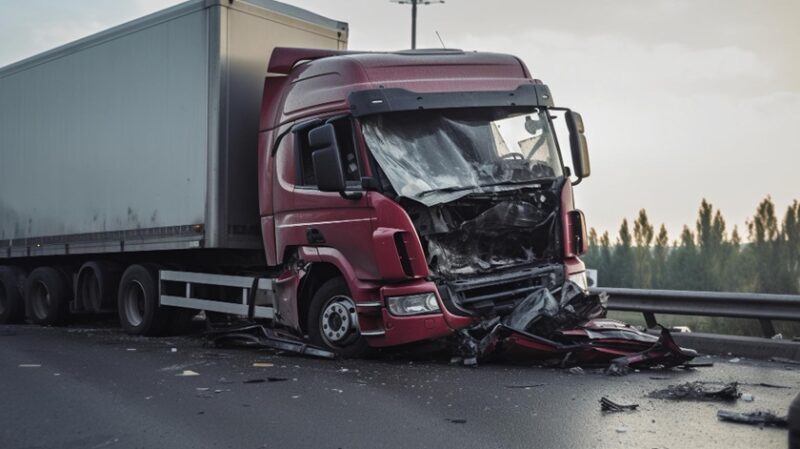Trucking injury cases can be complex and challenging, requiring a thorough understanding of the key evidence that can make or break your case. Whether you’re a victim seeking justice or a legal professional navigating the complexities of a trucking injury lawsuit, having a solid grasp of the evidence is crucial. In this article, we’ll break down the essential elements you need to know to build a strong case and increase your chances of a successful outcome.
1. Accident Reports and Documentation
In any trucking injury case, accident reports and documentation are the foundation of your evidence. Ensure that law enforcement is called to the scene to conduct a thorough investigation. The police report will contain crucial details such as witness statements, weather conditions, and any citations issued. Collect all available documentation, including photos of the accident scene, vehicle damage, and any visible injuries. Make sense of accident reports with an expert legal team from Trucking Injury Law Group.
2. Driver Logs and Records
Trucking companies are required to keep detailed records of their drivers’ activities. Driver logs, also known as Hours of Service (HOS) records, are vital evidence in establishing whether the truck driver adhered to federal regulations regarding rest breaks and driving hours. Any violations could point to driver fatigue as a contributing factor to the accident.
3. Maintenance Records for the Truck
Poorly maintained trucks are a significant hazard on the road. Request maintenance records for the truck involved in the accident. Look for evidence of regular inspections, repairs, and compliance with safety standards. Any negligence in maintaining the vehicle may shift liability to the trucking company.
4. Black Box Data
Many commercial trucks are equipped with event data recorders (EDRs), commonly known as black boxes. These devices capture important data about the vehicle’s speed, brake application, and other critical parameters in the moments leading up to an accident. Obtaining and analyzing black box data can provide invaluable insights into the cause of the collision.
5. Driver Qualifications and Training Records
Examine the qualifications and training records of the truck driver involved in the accident. Ensure they possess the necessary certifications and have undergone proper training. Inadequate training or hiring practices may indicate negligence on the part of the trucking company.
6. Drug and Alcohol Testing Results
Federal regulations mandate that truck drivers undergo drug and alcohol testing following accidents. Obtain the results of these tests to determine whether the driver was under the influence at the time of the collision. Positive test results can significantly impact the liability of both the driver and the trucking company.
7. Employer Liability: Company Policies and Procedures
Review the trucking company’s policies and procedures to assess whether they adhere to industry standards and federal regulations. Inconsistent or lax policies may expose the company to liability. Additionally, if the driver was pressured to violate regulations, it could strengthen your case against the employer.
8. Electronic Logging Device (ELD) Data
ELDs are now mandatory for most commercial trucks to track driver compliance with HOS regulations. Request ELD data to verify the accuracy of the driver’s logs and ensure compliance with federal guidelines. Discrepancies between manual logs and electronic records can be crucial evidence in proving negligence.
9. Expert Witness Testimonies
Consider hiring expert witnesses to support your case. Accident reconstruction specialists, medical professionals, and industry experts can provide testimony that strengthens your position. Their analyses can help establish the cause of the accident, the extent of injuries, and the level of negligence involved.
10. Medical Records and Expert Testimonies
Accurate and thorough medical records are essential in demonstrating the extent of injuries sustained in the trucking accident. Obtain medical records detailing diagnoses, treatments, and prognosis. Expert testimonies from healthcare professionals can help establish the link between the accident and the injuries suffered.
11. Surveillance Footage and Dashcam Videos
In today’s digital age, surveillance cameras and dashcams are prevalent. Seek out any available footage from nearby cameras or vehicles that may have captured the accident. This visual evidence can provide a clear depiction of the events leading up to the collision and can be compelling in court.
12. Eyewitness Statements
Eyewitnesses play a crucial role in corroborating the events surrounding a trucking accident. Collect statements from individuals who witnessed the collision and document their contact information. Eyewitness testimonies can provide valuable perspectives and strengthen your case.
13. Road Conditions and Weather Reports
Understanding the environmental factors at the time of the accident is crucial in trucking injury cases. Obtain weather reports for the day of the incident and assess how road conditions may have contributed to the collision. Rain, snow, or fog can significantly impact visibility and road traction, potentially influencing the sequence of events leading to the accident.
14. Cell Phone Records
Distracted driving is a leading cause of accidents. Request cell phone records for the truck driver involved in the collision. Any evidence of texting or talking on the phone at the time of the accident can be compelling in establishing negligence. Cell phone records can be a critical piece of evidence in cases where driver distraction is suspected.
15. Pre-existing Conditions of the Truck Driver
Explore the medical history and pre-existing conditions of the truck driver. Conditions such as sleep apnea, epilepsy, or cardiovascular issues may have contributed to the accident. If the trucking company was aware of these conditions and failed to address them, it could strengthen your case against the employer.
16. Communication Records Between Driver and Company
Examine communication records between the truck driver and the trucking company. This includes emails, messages, and any documented conversations. Look for evidence of pressure to meet tight deadlines, disregard for safety protocols, or any communication that may indicate negligence on the part of the employer. Clear documentation can establish a chain of responsibility.
Conclusion
Navigating a trucking injury case requires a meticulous approach to gathering and presenting evidence. By focusing on these key elements, you can build a strong foundation for your case, increasing the likelihood of a favorable outcome. Whether you’re a victim seeking justice or a legal professional advocating for your client, a thorough understanding of the key evidence is essential in the pursuit of justice in trucking injury cases.










